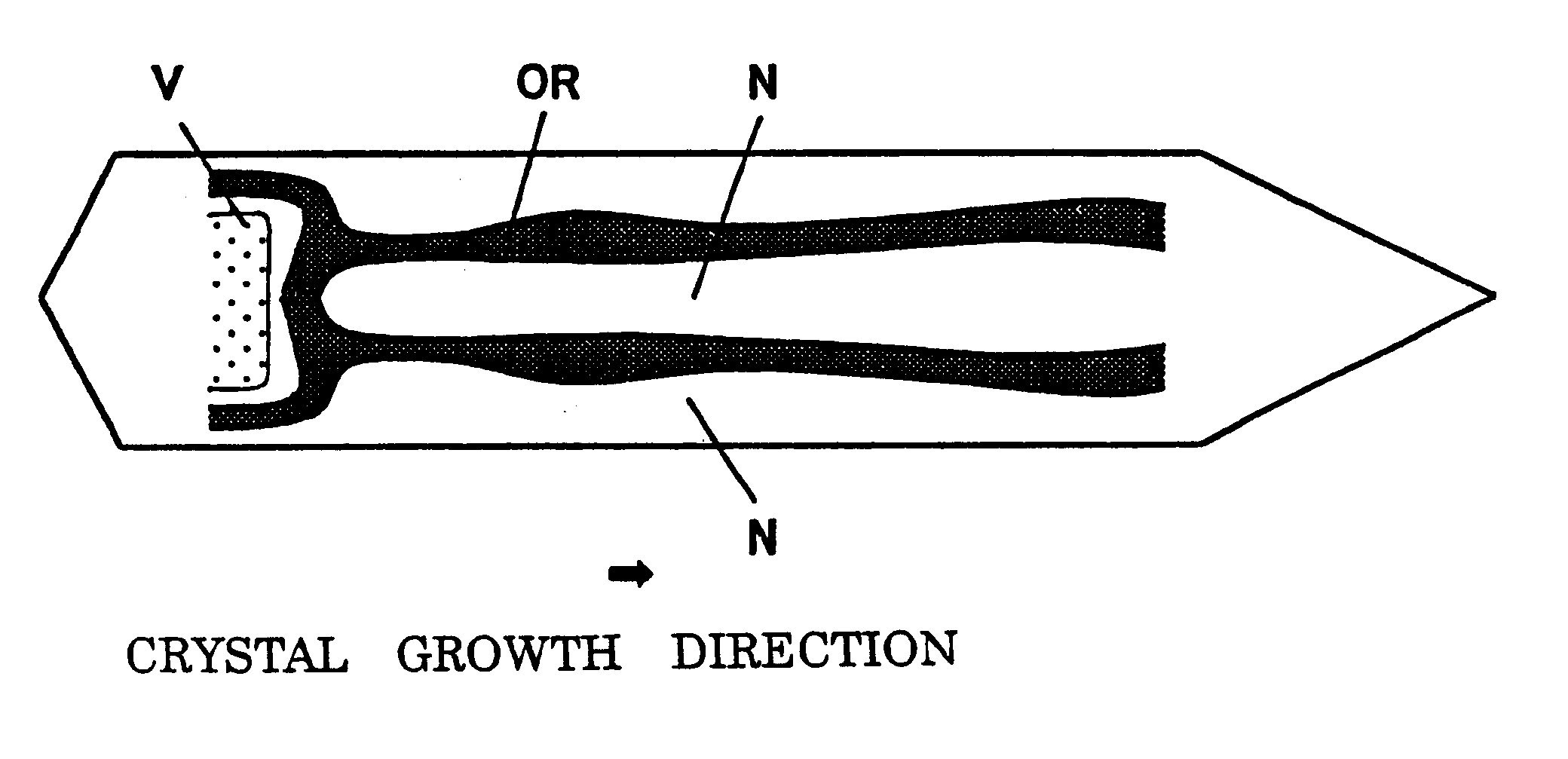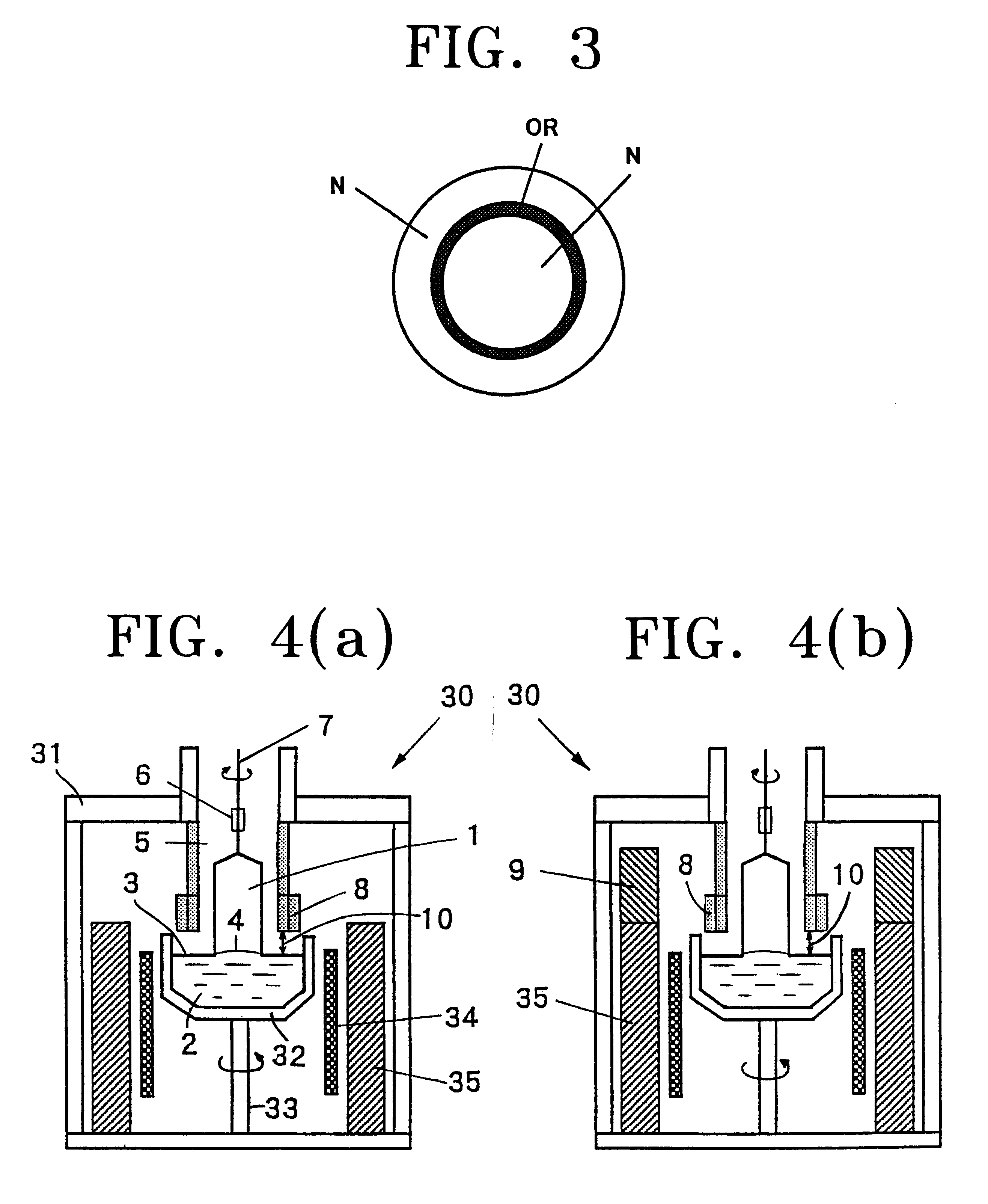Silicon single crystal wafer and method for producing it
a single crystal wafer and silicon technology, applied in the direction of semiconductor/solid-state device testing/measurement, instruments, under a protective fluid, etc., can solve the problems of low yield in the v-rich region, lowered device yield, and used device fabrication
- Summary
- Abstract
- Description
- Claims
- Application Information
AI Technical Summary
Problems solved by technology
Method used
Image
Examples
example 1
A silicon single crystal was grown through use of the crystal pulling apparatus 30 of FIG. 4(a). 100 kg of Polycrystalline material of silicon was charged into a quartz crucible having a diameter of 24 inches. A single crystal ingot having a diameter of 8 inches and a length in the straight body of about one meter and orientation was pulled.
The furnace structure (hot zone: HZ) wherein a gap 10 between the surface 3 of the silicon melt and the lower end of the annular solid-liquid interface insulator 8 was 70 mm was used. The temperature of the silicon melt 2 was kept at about 1420.degree. C.
The average pulling rate was decreased under the following condition, from 0.6 to 0.3 mm / min, by 0.05 mm / min every tenth centimeter, and elimination of OSF ring at the center of a bulk of crystal and formation of L / D region were studied. The crystal was cut vertically at a thickness of 2 mm, and subjected to an etching treatment in order to eliminate a surface mechanical damage to prepare two sa...
example 2
The crystal was pulled in the same manner as Example 1 except that the furnace structure wherein the upper insulator 9 was disposed on the insulating material 35 was provided as shown in FIG. 4(b), and a gap 10 between the surface 3 of the silicon melt and the lower end of the annular solid-liquid interface insulator 8 was 60 mm. The single crystal ingot having almost the same quality as Example 1 was obtained. In that case, the OSF region was apt to be narrower in the surface of the wafer, since .DELTA.G was shifted further to minus side.
example 3
The crystal was pulled in the same manner as Example 1 except that oxygen concentration in the growing crystal was controlled to be 24 ppma or less. The defects were evaluated. OSF was not generated when thermal oxidation was performed. It is considered that latent nuclei were present, but OSF was not generated when thermal oxidation was performed, since oxygen concentration was low.
The present invention is not limited to the above-described embodiment. The above-described embodiment is a mere example, and those having the substantially same structure as that described in the appended claims and providing the similar action and effects are included in the scope of the present invention.
For example, in the above-described embodiment, the silicon single crystal having a diameter of 8 inches was grown. However, the present invention can be applied to a method of pulling a crystal recently produced having larger diameter, for example, 10 to 16 inches, or more. Furthermore, the present i...
PUM
 Login to View More
Login to View More Abstract
Description
Claims
Application Information
 Login to View More
Login to View More - R&D
- Intellectual Property
- Life Sciences
- Materials
- Tech Scout
- Unparalleled Data Quality
- Higher Quality Content
- 60% Fewer Hallucinations
Browse by: Latest US Patents, China's latest patents, Technical Efficacy Thesaurus, Application Domain, Technology Topic, Popular Technical Reports.
© 2025 PatSnap. All rights reserved.Legal|Privacy policy|Modern Slavery Act Transparency Statement|Sitemap|About US| Contact US: help@patsnap.com



